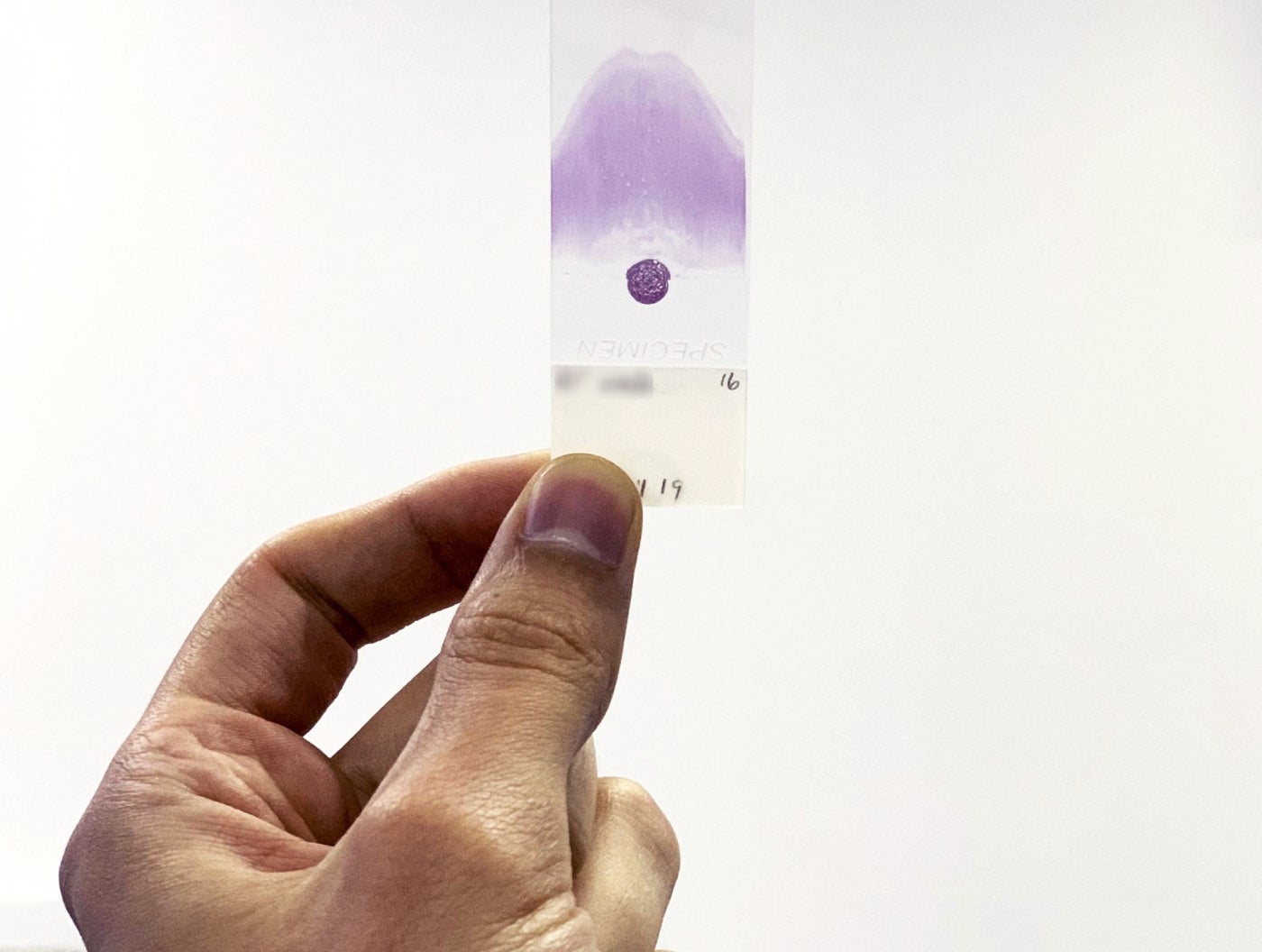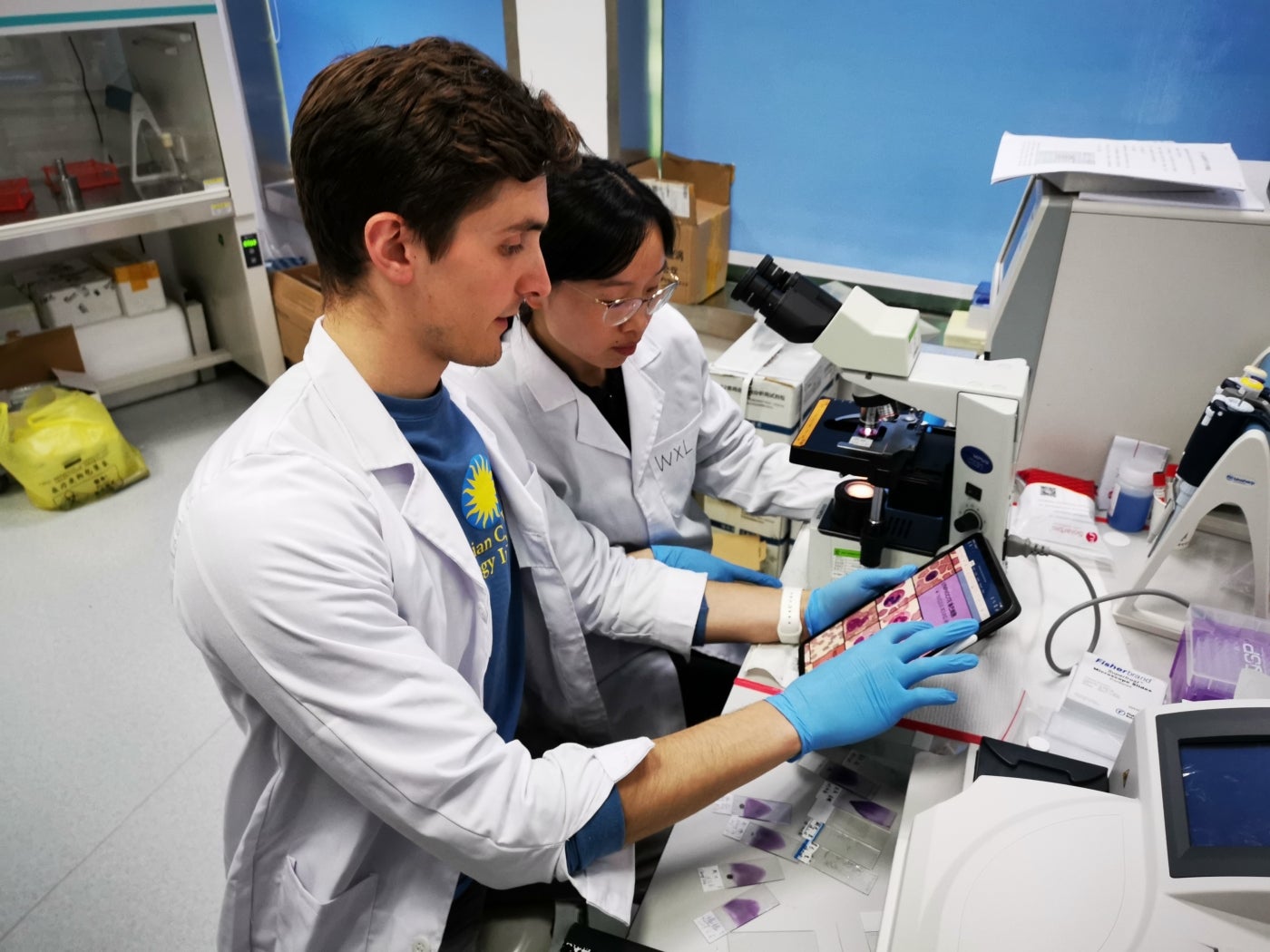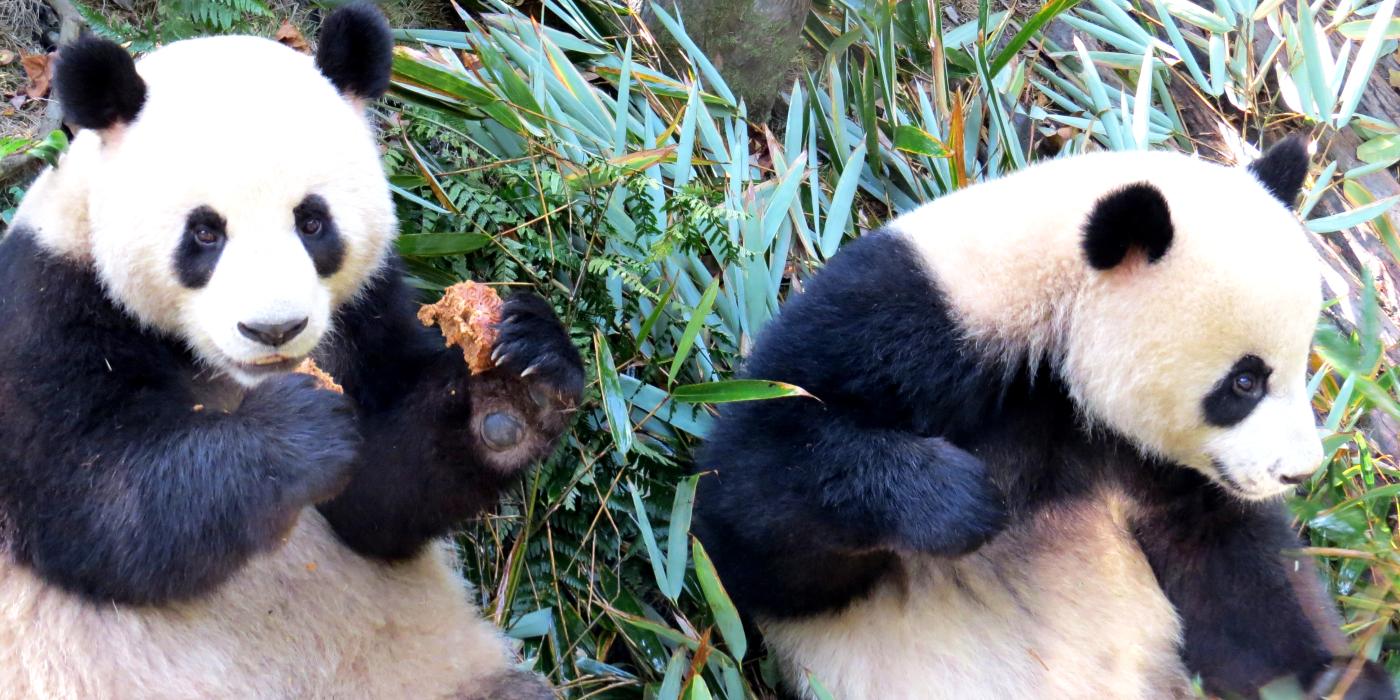Learning More About Panda Health One Drop of Blood at a Time
You may not like needles or giving blood when you go to the doctor’s office, but did you know that blood is an important diagnostic tool for veterinarians? When an animal is feeling sick, one of the very first steps in a veterinarian’s diagnosis (i.e., the process of identifying the cause of a patient’s disease) and treatment process is often to obtain a blood sample for analysis. When examined under a microscope, a tiny drop of blood can provide a wealth of information about an animal’s disease status.
Hematology, which is used commonly in both human and veterinary medicine, refers to the process of analyzing blood, including using a microscope. For this diagnostic technique, a “blood smear” is prepared: a tiny drop of blood is spread to a thin, single-cell layer on a microscope slide. This allows the veterinarian to observe the animal’s blood cells on high magnification with a microscope to determine whether they are healthy. This is done by evaluating the number of cells, as well as cell shape and color (or “morphology”).

Red blood cells are responsible for transporting oxygen in blood. Looking at red blood cells under a microscope can tell us if an animal is anemic or whether an animal is affected by a chronic disease process or something more sudden. Abnormal red blood cell morphology can hint at disease processes like toxicity (from heavy metals like lead, for example). Veterinarians are also on the lookout for microscopic blood parasites when assessing red blood cells.
Meanwhile, white blood cells — the body’s defense mechanism against infections — can reveal whether an animal has inflammation or infection somewhere in the body. If there is an infection, white blood cells can often hint at whether it’s due to bacteria, parasites or even viruses. Thus, hematology is an extremely valuable method for veterinarians to identify indicators of disease.

All of this is true for giant pandas, too. Just like at our very own Smithsonian's National Zoo, the pandas at China’s Chengdu Research Base of Giant Panda Breeding (also called Chengdu Panda Base or CPB) are trained for voluntary venipuncture — the medical act of drawing a blood sample. For a simple treat reward (like honey, bamboo shoots, carrots or specially formulated “panda cakes”), the giant pandas become very willing — even eager — patients! The pandas will sit very still behind a safety barrier and permit veterinarians to take a blood sample without any complaints. This behavior takes a lot of dedicated training by animal care and behavioral staff, as well as continued practice to make sure the pandas don’t forget their lessons. It also helps that giant pandas are very food-motivated.
Although the diagnostic utility of blood samples holds true for many different species, veterinarians must be able to recognize what “normal” looks like for a given species to be able to tell when something is not right. For panda veterinarians, it is important to understand “normal” for giant panda blood cells. In 2019, as part of his veterinary clinical training, Global Health Program intern (and now Dr.) Zachary Dvornicky-Raymond spent two months with our partners at the Chengdu Panda Base and Global Health Program field veterinarian Dr. Marc Valitutto studying giant panda blood cells.For intern and then-veterinary student Zachary, it was “the opportunity of a lifetime.”

His project aimed to develop a comprehensive resource on giant panda blood parameters that can be used by veterinarians to diagnose diseases at CPB and in wild giant pandas. The project served to advance global scientific knowledge of giant panda hematology and build capacity with CPB’s veterinary and research teams. On any given day, Zack would process and analyze anywhere from one to 20 giant panda blood samples. When he wasn’t staring into a microscope, his other duties included developing protocols, teaching, working on research projects, and conducting clinical medicine.
His experience at CPB was invaluable, teaching him critical skills in versatility, international collaboration, and project implementation that will be highly beneficial in his burgeoning career in conservation medicine. And his favorite part of his experience? In Zack's own words, “That’s the beauty of it. There was no such thing as a ‘typical day!'”
Related Species:




